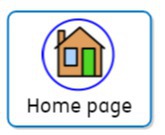The HOTW Postcard activities enable pupils to connect with one another through the use of traditional and modern technology. Linguistic identities are preserved due to pupils being able to communicate in their own language.
Opportunities for interaction with one another, through questions and responses, are possible. Most importantly, pupils will develop an understanding and appreciation of differences and similarities through real-life engaging activities.
In the following video, Elaine Manton from Loreto Grammar School in England, one of the Postcard Project Co-ordinators provides an overview of the project where she explains:
- How we started the postcard project
- How we communicated with each other
- What we put on the postcards
- The technology we used
- How we shared what we learnt with our schools
Sarah Donn, another Postcard Project Co-ordinator from Oregon in USA provides an overview of how the project was managed in the following video.
She talks about
- How we created the postcards
- How we organised who sent to who
- How to keep the communication channels open between different countries
- How her pupils created the messages on the postcards
- How she shared new postcards that arrived with her pupils
- How we overcame diffiiculties with postcards being lost in transit.
The postcard project was highly successful with all partner schools who were invovled. The following presentations provides information about:
- how the project enabled communication and collaboration
- the journey through the project from some of the teachers invovled.
To find out more about how to take part in the project, go to the Project Information Page.
To find out more about what the schools have been doing in the Postcard activity go to the Postcard Map page to view the Postcard Padlet Pages that they have created and find out more on the HOTW blog.
